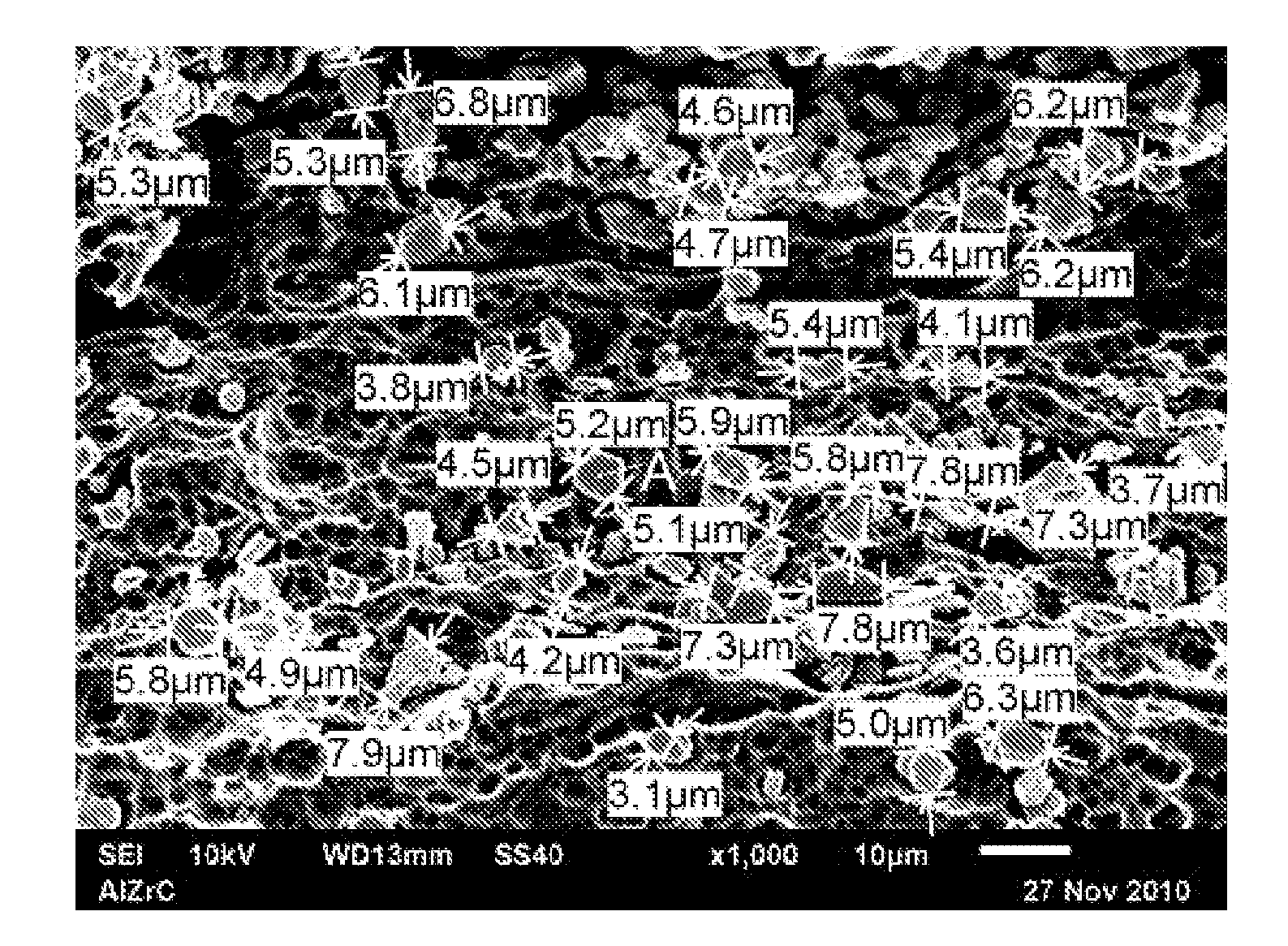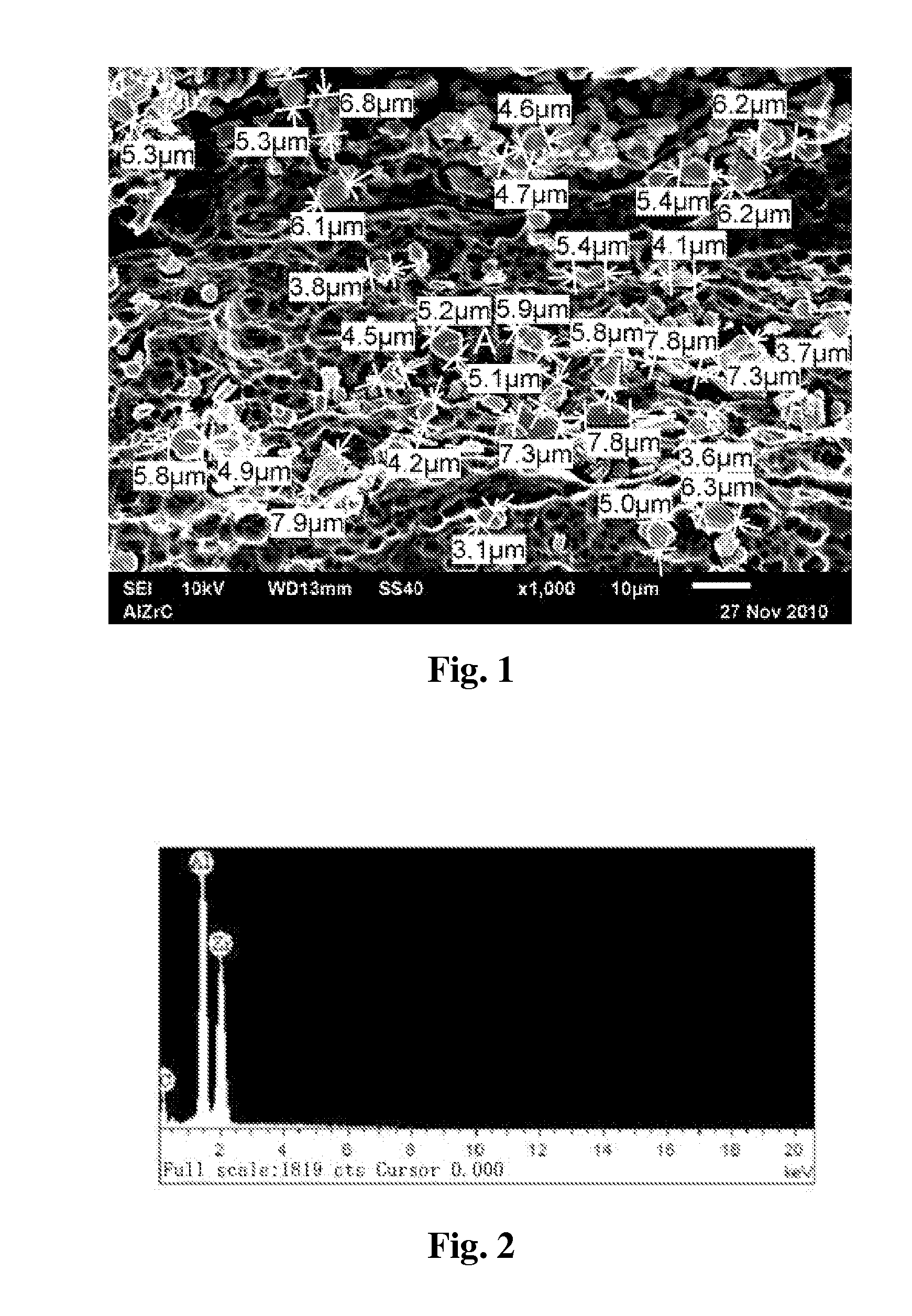Grain refiner for magnesium and magnesium alloys and method for producing the same
- Summary
- Abstract
- Description
- Claims
- Application Information
AI Technical Summary
Benefits of technology
Problems solved by technology
Method used
Image
Examples
example 1
[0019]968.5 kg commercially pure aluminum (Al), 30 kg zirconium (Zr) scarp and 1.5 kg graphite powder were weighed. The aluminum was added to an induction furnace, melt therein, and heated to a temperature of 1050° C.±10° C., in which the zirconium scarp and graphite powder were then added and dissolved. The resultant mixture was kept at the temperature under mechanical agitation for 100 minutes, and directly cast into Waffle ingots, i.e., aluminum-zirconium-carbon (Al—Zr—C) intermediate alloy. Analysis was made under scanning electron microscope (SEM). FIG. 1 shows the SEM photographs of Al—Zr—C intermediate alloy at 1000 magnification, in which the particles size is calibrated. It can be seen that the size of the compound particle was between 2 and 10 μm, mostly between 4 and 8 μm. FIG. 2 is an energy spectrum of A in one particle in FIG. 1. The standard samples used in the test were C:CaCO3, Al:Al2O3, and Zr:Zr, and the calculated atom percentages were 61.05% C, 23.82% Al, and 15...
example 2
[0020]952.3 kg commercially pure aluminum (Al), 45 kg zirconium (Zr) scarp and 2.7 kg graphite powder were weighed. The aluminum was added to an induction furnace, melt therein, and heated to a temperature of 1200° C.±10° C., in which the zirconium scarp and graphite powder were then added and dissolved. The resultant mixture was kept at the temperature under mechanical agitation for 30 minutes, and directly cast into Waffle ingots, i.e., aluminum-zirconium-carbon (Al—Zr—C) intermediate alloy.
example 3
[0021]989 kg commercially pure aluminum (Al), 10 kg zirconium (Zr) scarp and 1 kg graphite powder were weighed. The aluminum was added to an induction furnace, melt therein, and heated to a temperature of 1100° C.±10° C., in which the zirconium scarp and graphite powder were then added and dissolved. The resultant mixture was kept at the temperature under mechanical agitation for 45 minutes, and directly cast into Waffle ingots, i.e., aluminum-zirconium-carbon (Al—Zr—C) intermediate alloy.
PUM
| Property | Measurement | Unit |
|---|---|---|
| Temperature | aaaaa | aaaaa |
| Fraction | aaaaa | aaaaa |
| Fraction | aaaaa | aaaaa |
Abstract
Description
Claims
Application Information
 Login to View More
Login to View More - R&D
- Intellectual Property
- Life Sciences
- Materials
- Tech Scout
- Unparalleled Data Quality
- Higher Quality Content
- 60% Fewer Hallucinations
Browse by: Latest US Patents, China's latest patents, Technical Efficacy Thesaurus, Application Domain, Technology Topic, Popular Technical Reports.
© 2025 PatSnap. All rights reserved.Legal|Privacy policy|Modern Slavery Act Transparency Statement|Sitemap|About US| Contact US: help@patsnap.com



